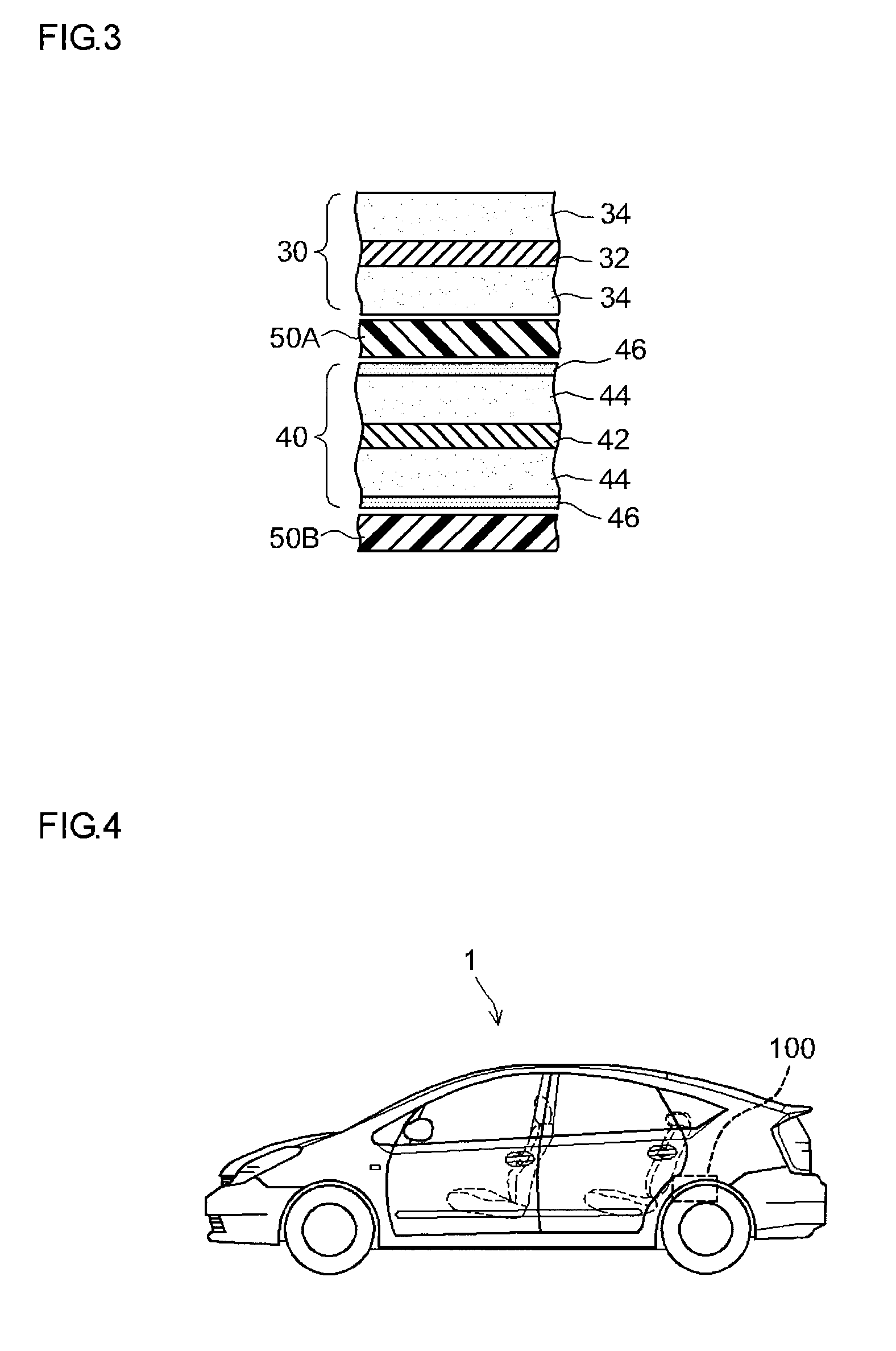Lithium secondary battery and manufacturing method thereof
a secondary battery and lithium battery technology, applied in the field of lithium secondary batteries, can solve the problems increasing internal resistance, etc., and achieve the effects of reducing electrical conductivity, long-term use, and preferable strength of the active material layer of the negative electrod
- Summary
- Abstract
- Description
- Claims
- Application Information
AI Technical Summary
Benefits of technology
Problems solved by technology
Method used
Image
Examples
Embodiment Construction
view schematically showing a vehicle (automobile) provided with the lithium secondary battery of the present invention;
[0032]FIG. 5 is a perspective view schematically showing an 18650 type lithium secondary battery produced in an example;
[0033]FIG. 6 is a graph indicating the results of measuring internal resistance of lithium secondary batteries using a negative electrode raw material for the negative electrode; and,
[0034]FIG. 7 is a graph indicating ratios (resistance ratios) of the internal resistance of lithium secondary batteries provided with a negative electrode on which a protective layer is formed to the internal resistance of lithium secondary batteries provided with a negative electrode raw material for the negative electrode.
BEST MODE FOR CARRYING OUT THE INVENTION
[0035]The following provides an explanation of preferred embodiments of the present invention. Furthermore, unless specifically indicated otherwise in the present description, those matters required for carryi...
PUM
| Property | Measurement | Unit |
|---|---|---|
| density | aaaaa | aaaaa |
| density | aaaaa | aaaaa |
| current | aaaaa | aaaaa |
Abstract
Description
Claims
Application Information
 Login to View More
Login to View More - R&D
- Intellectual Property
- Life Sciences
- Materials
- Tech Scout
- Unparalleled Data Quality
- Higher Quality Content
- 60% Fewer Hallucinations
Browse by: Latest US Patents, China's latest patents, Technical Efficacy Thesaurus, Application Domain, Technology Topic, Popular Technical Reports.
© 2025 PatSnap. All rights reserved.Legal|Privacy policy|Modern Slavery Act Transparency Statement|Sitemap|About US| Contact US: help@patsnap.com



